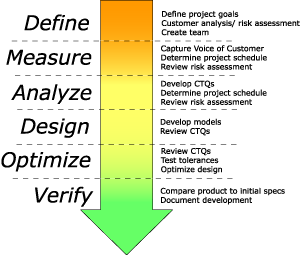Statistical Process Control (SPC) can be applied to software development processes. A process has one or more outputs, as depicted in the figure below. These outputs, in turn, have measurable attributes. SPC is based on the idea that these attributes have two sources of variation: natural (also known as common) and assignable (also known as special) causes. If the observed variability of the attributes of a process is within the range of variability from natural causes, the process is said to be under statistical control. The practitioner of SPC tracks the variability of the process to be controlled. When that variability exceeds the range to be expected from natural causes, one then identifies and corrects assignable causes.
SPC is a powerful tool to optimize the amount of information needed for use in making management decisions. Statistical techniques provide an understanding of the business baselines, insights for process improvements, communication of value and results of processes, and active and visible involvement. SPC provides real time analysis to establish controllable process baselines; learn, set, and dynamically improve process capabilities; and focus business on areas needing improvement. SPC moves away from opinion-based decision making.
These benefits of SPC cannot be obtained immediately by all organizations. SPC requires defined processes and a discipline of following them. It requires a climate in which personnel are not punished when problems are detected, and strong management commitment.
SPC is a powerful tool to optimize the amount of information needed for use in making management decisions. Statistical techniques provide an understanding of the business baselines, insights for process improvements, communication of value and results of processes, and active and visible involvement. SPC provides real time analysis to establish controllable process baselines; learn, set, and dynamically improve process capabilities; and focus business on areas needing improvement. SPC moves away from opinion-based decision making.
These benefits of SPC cannot be obtained immediately by all organizations. SPC requires defined processes and a discipline of following them. It requires a climate in which personnel are not punished when problems are detected, and strong management commitment.



